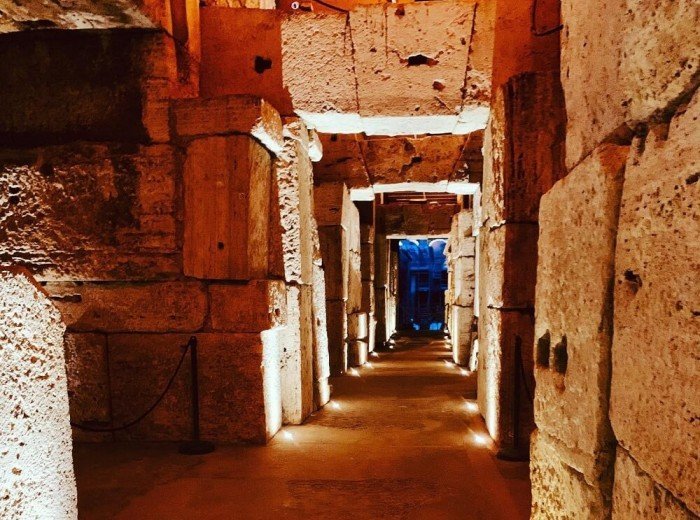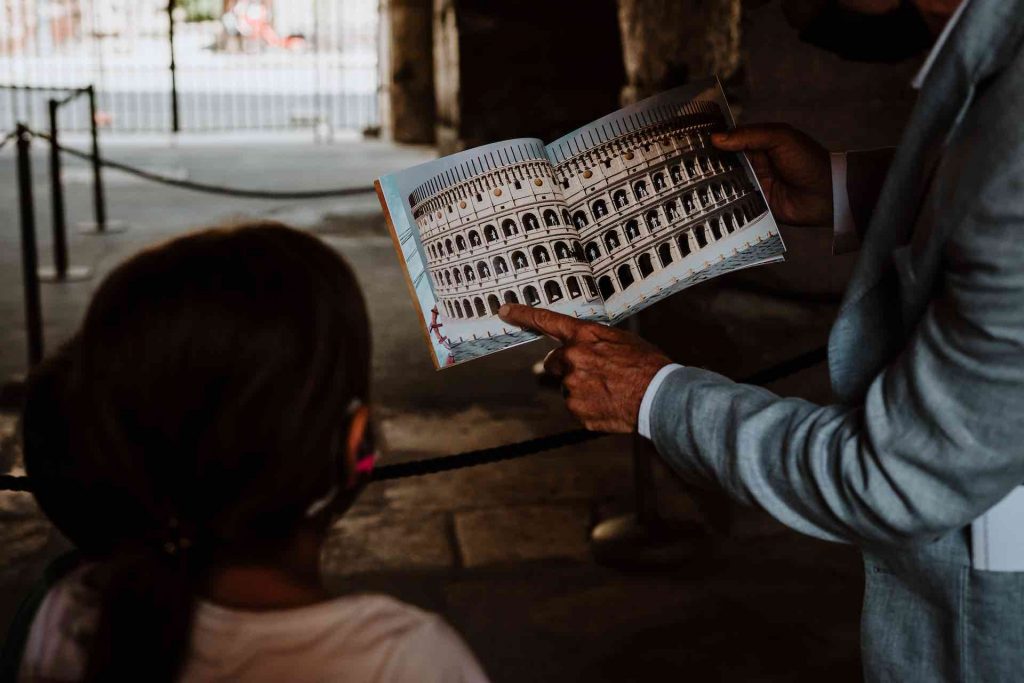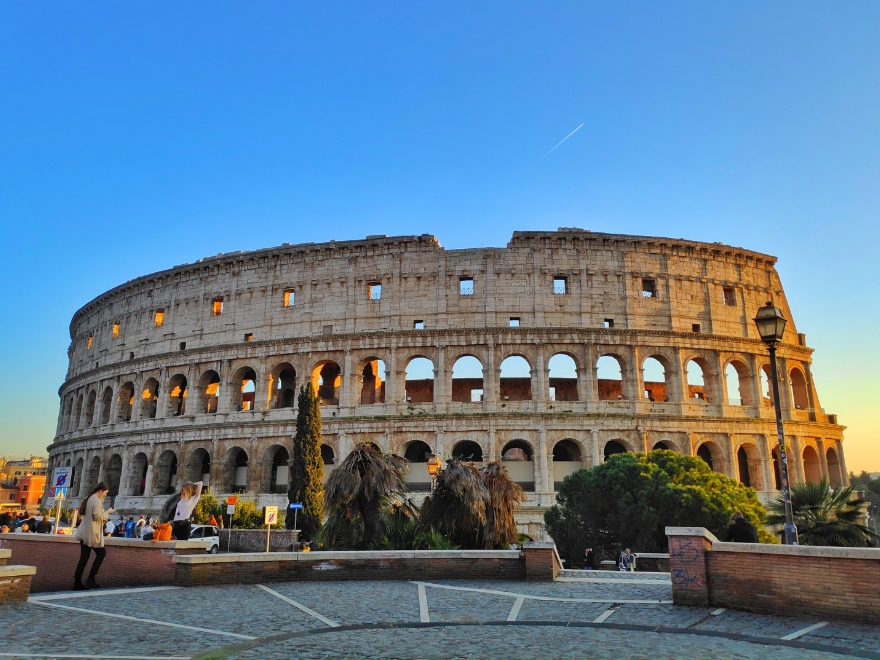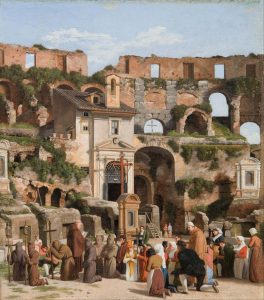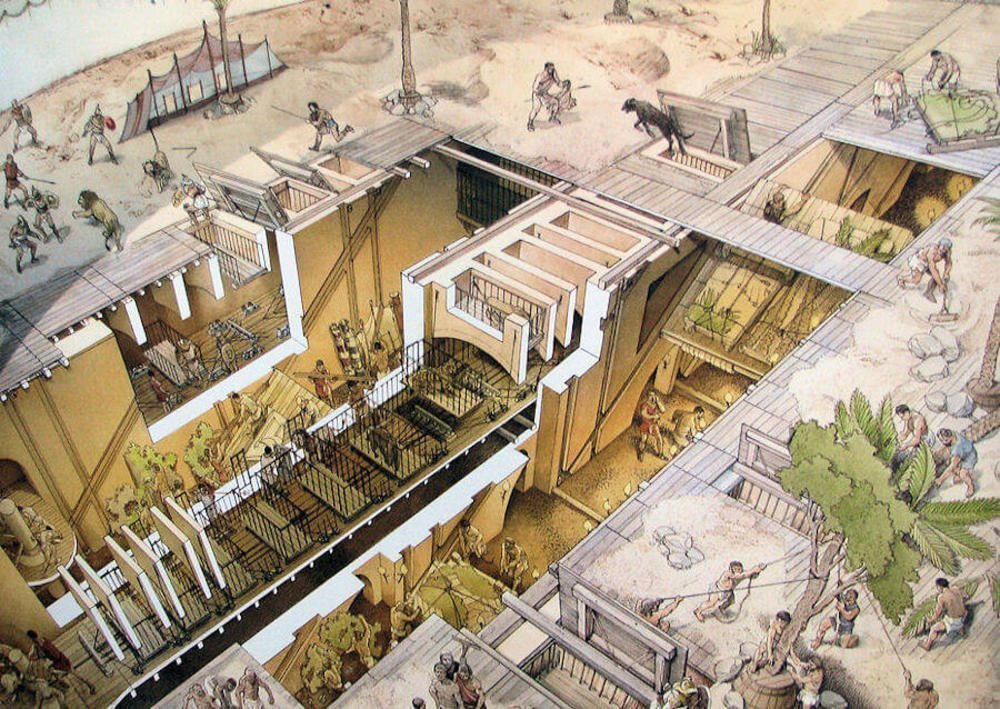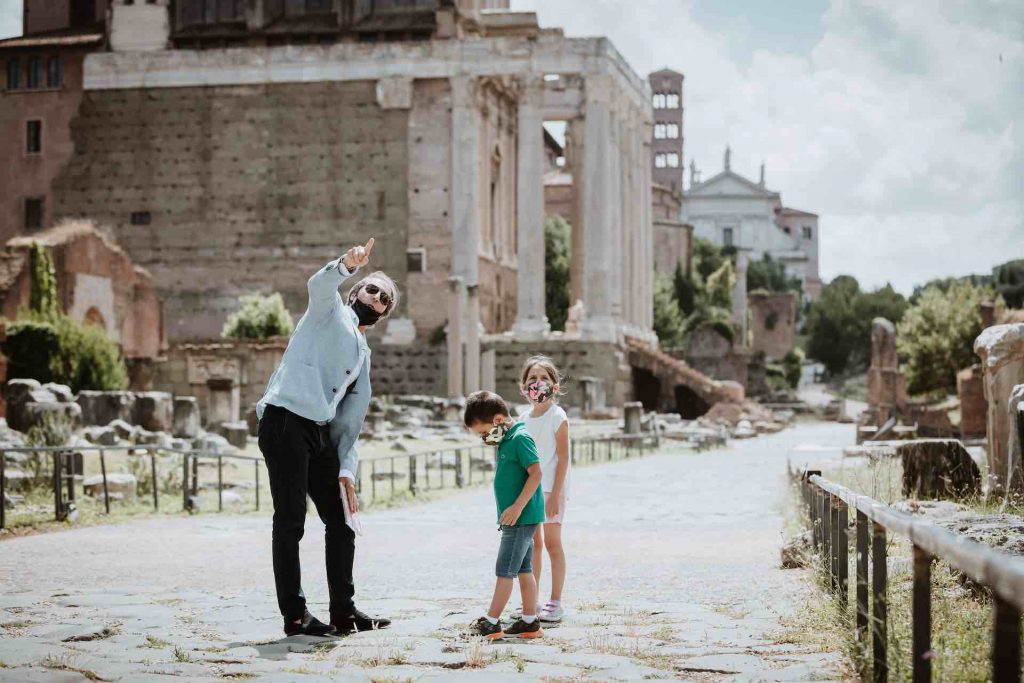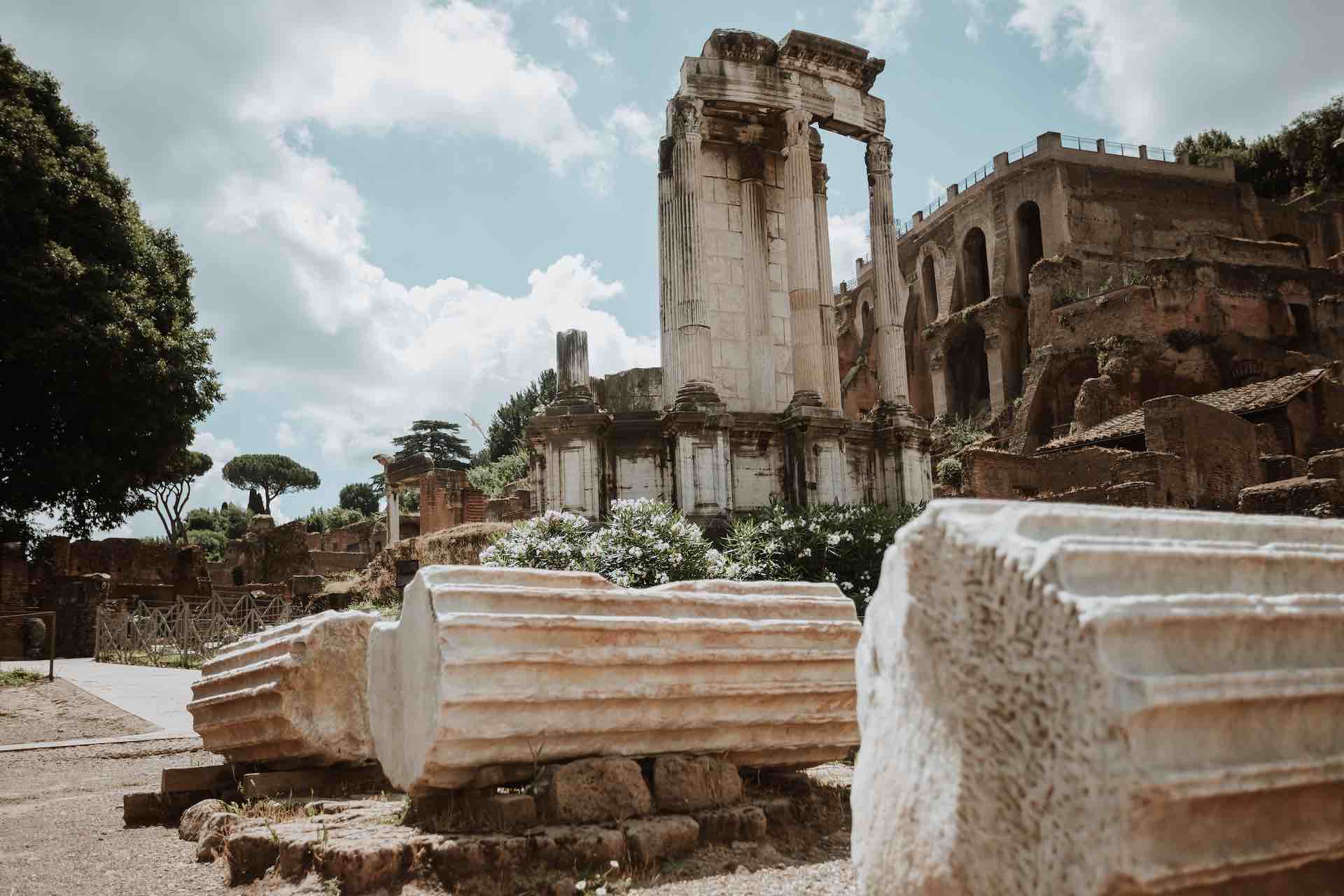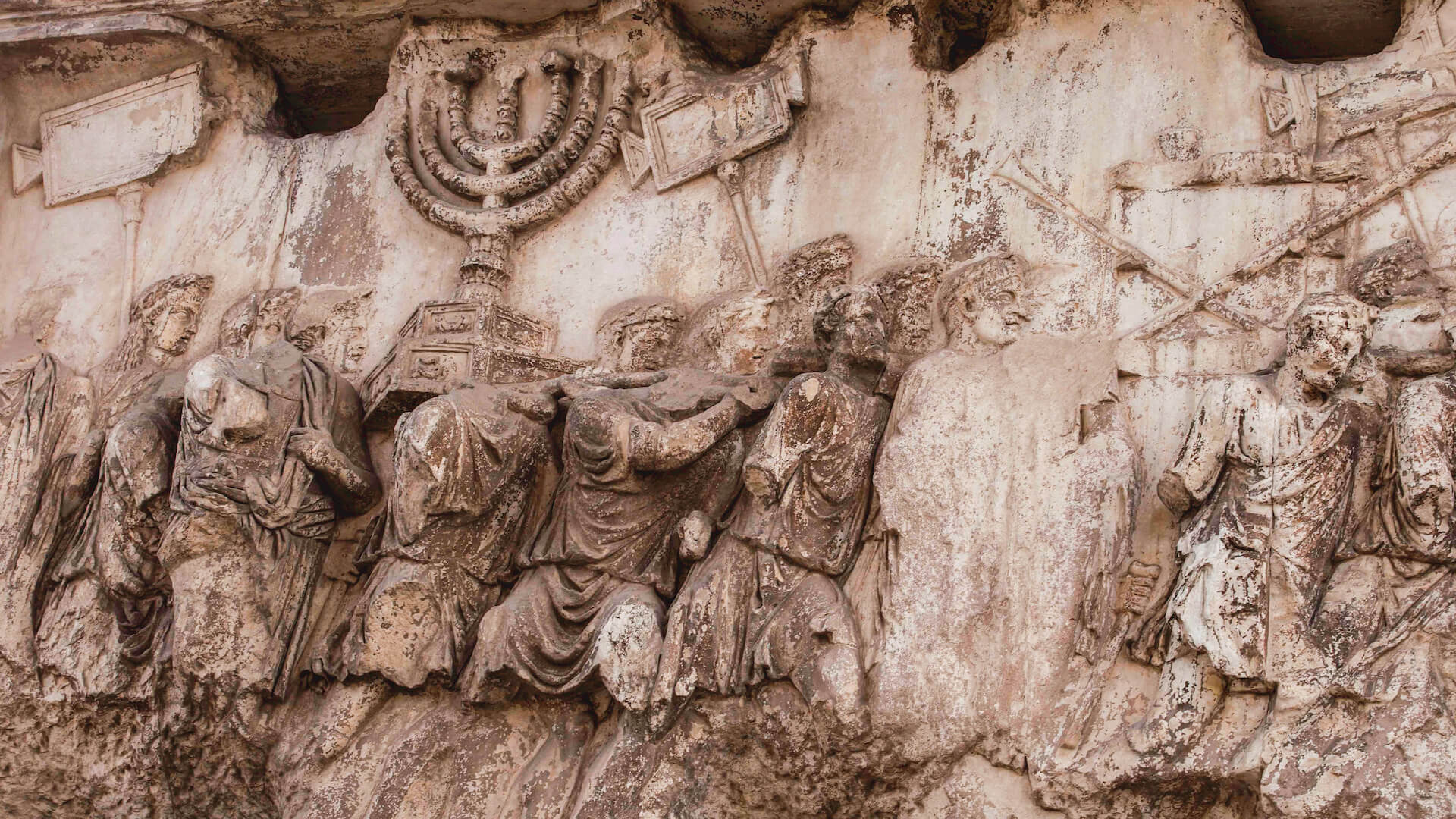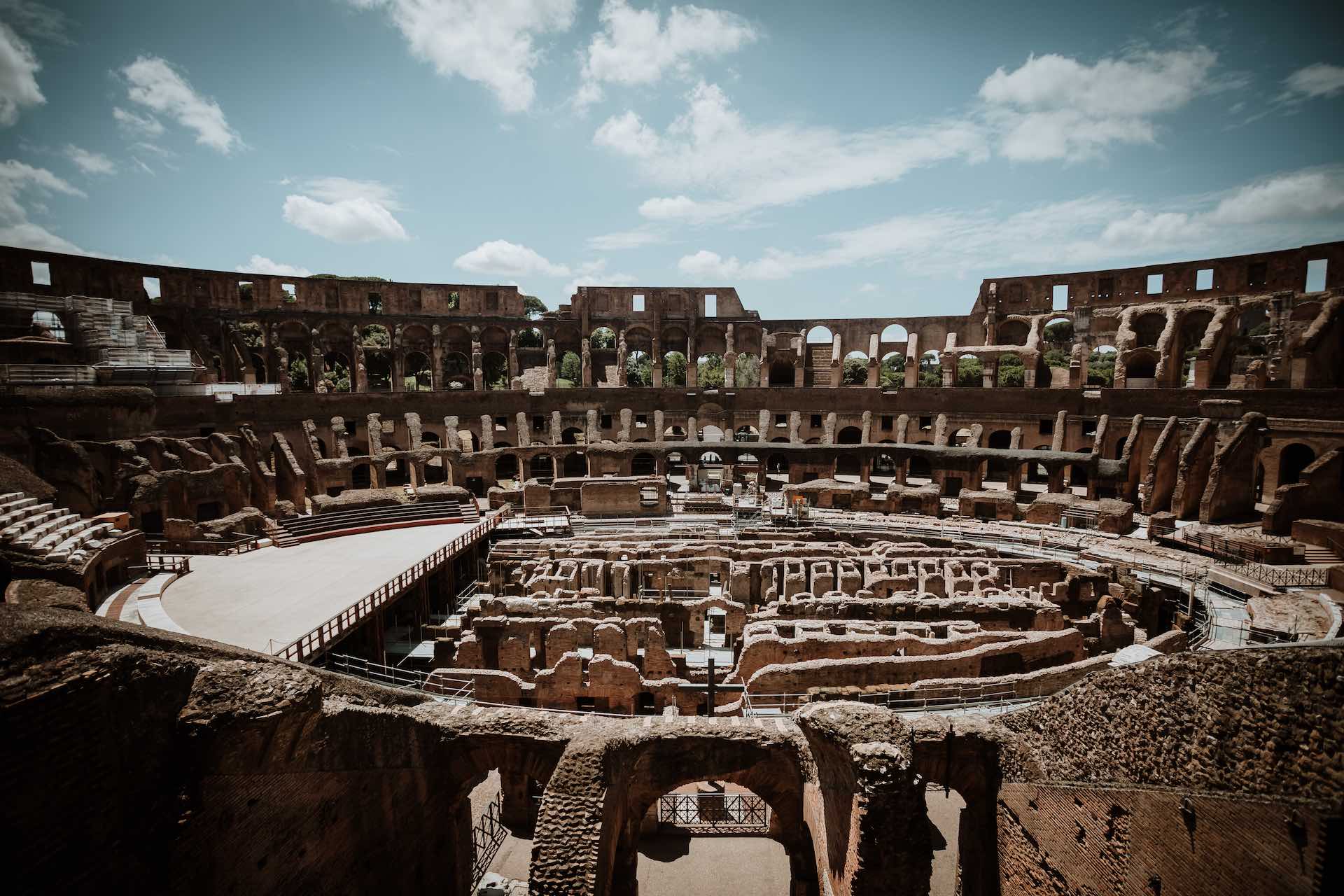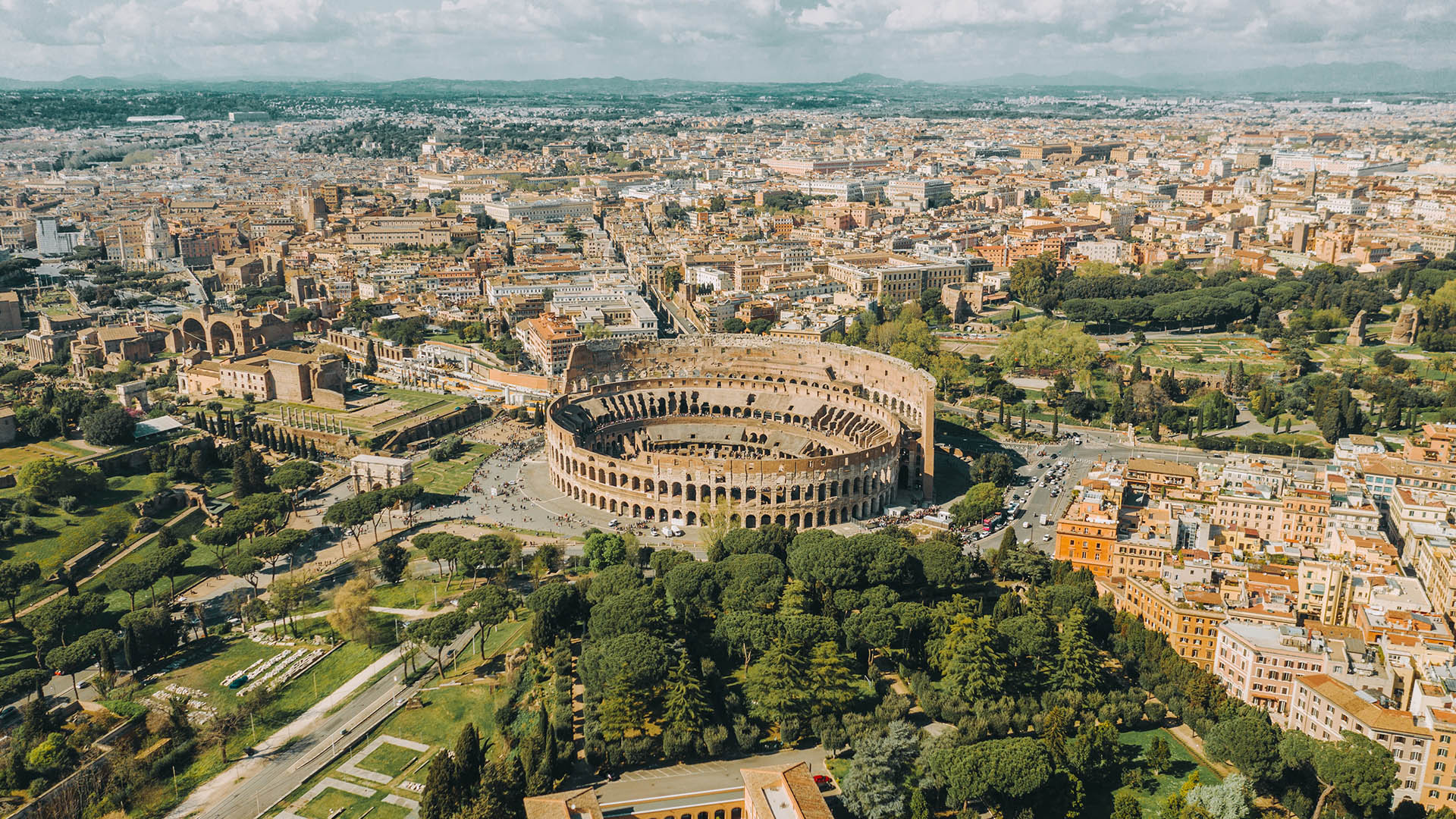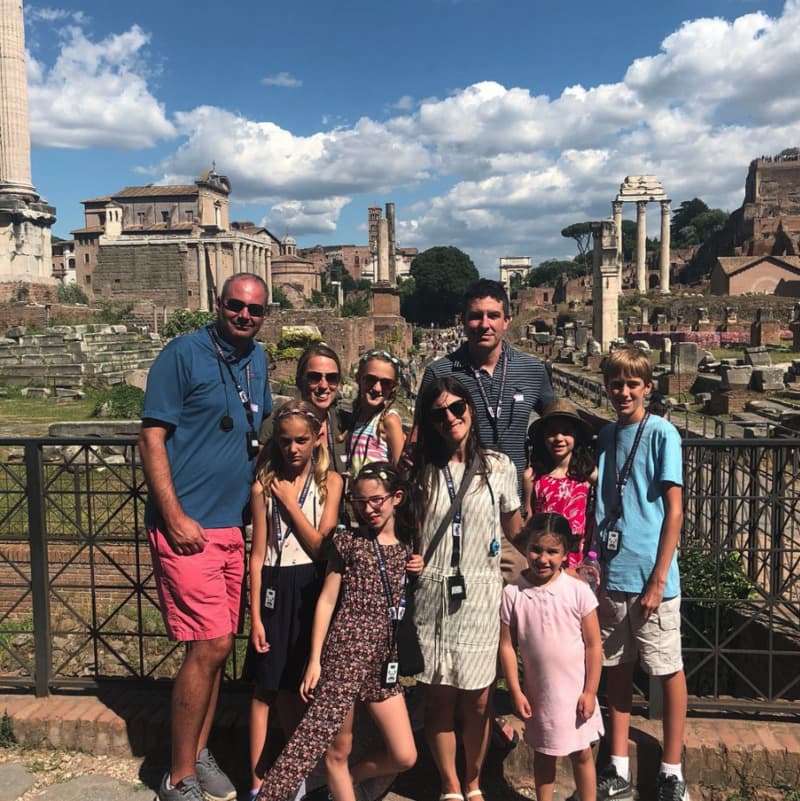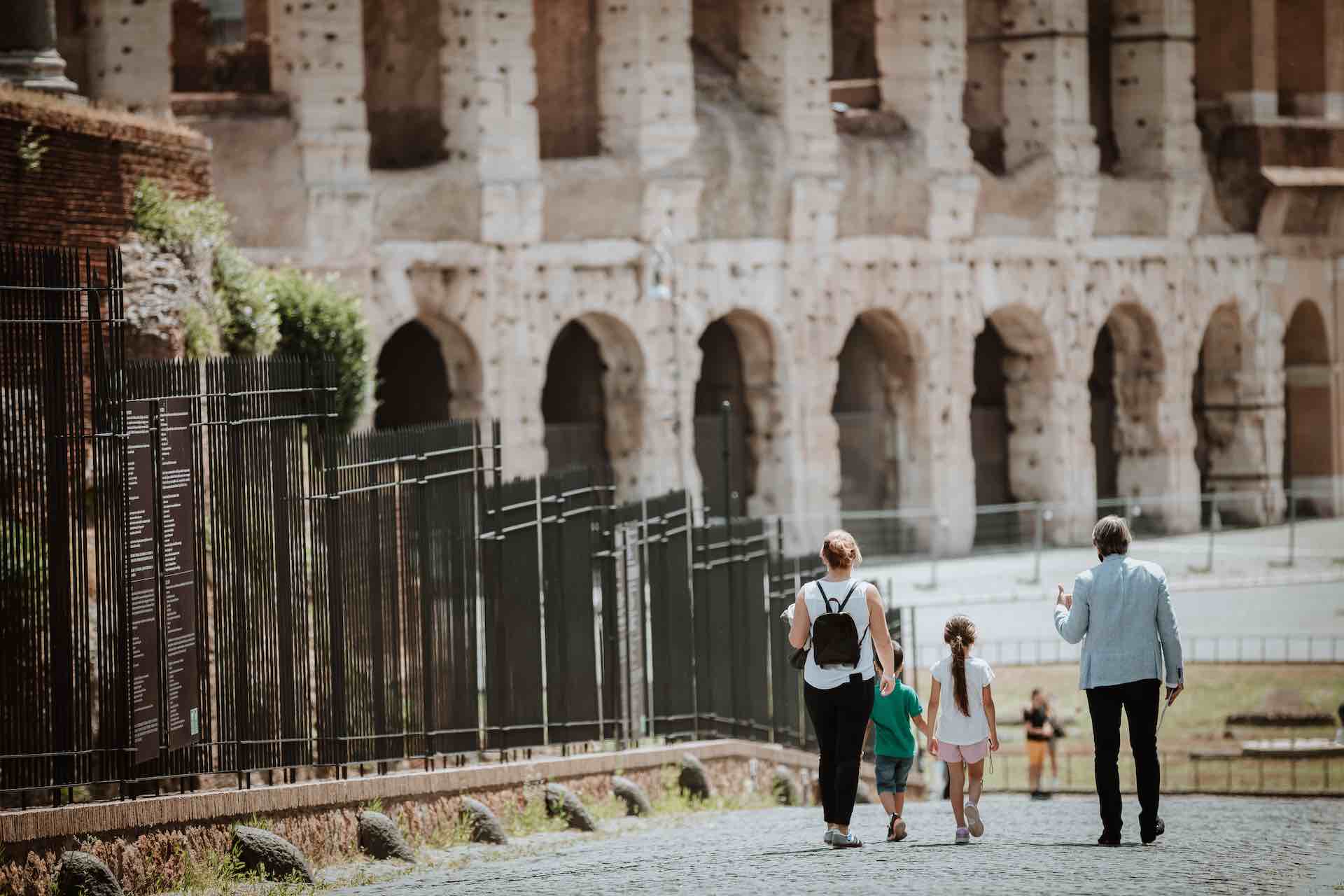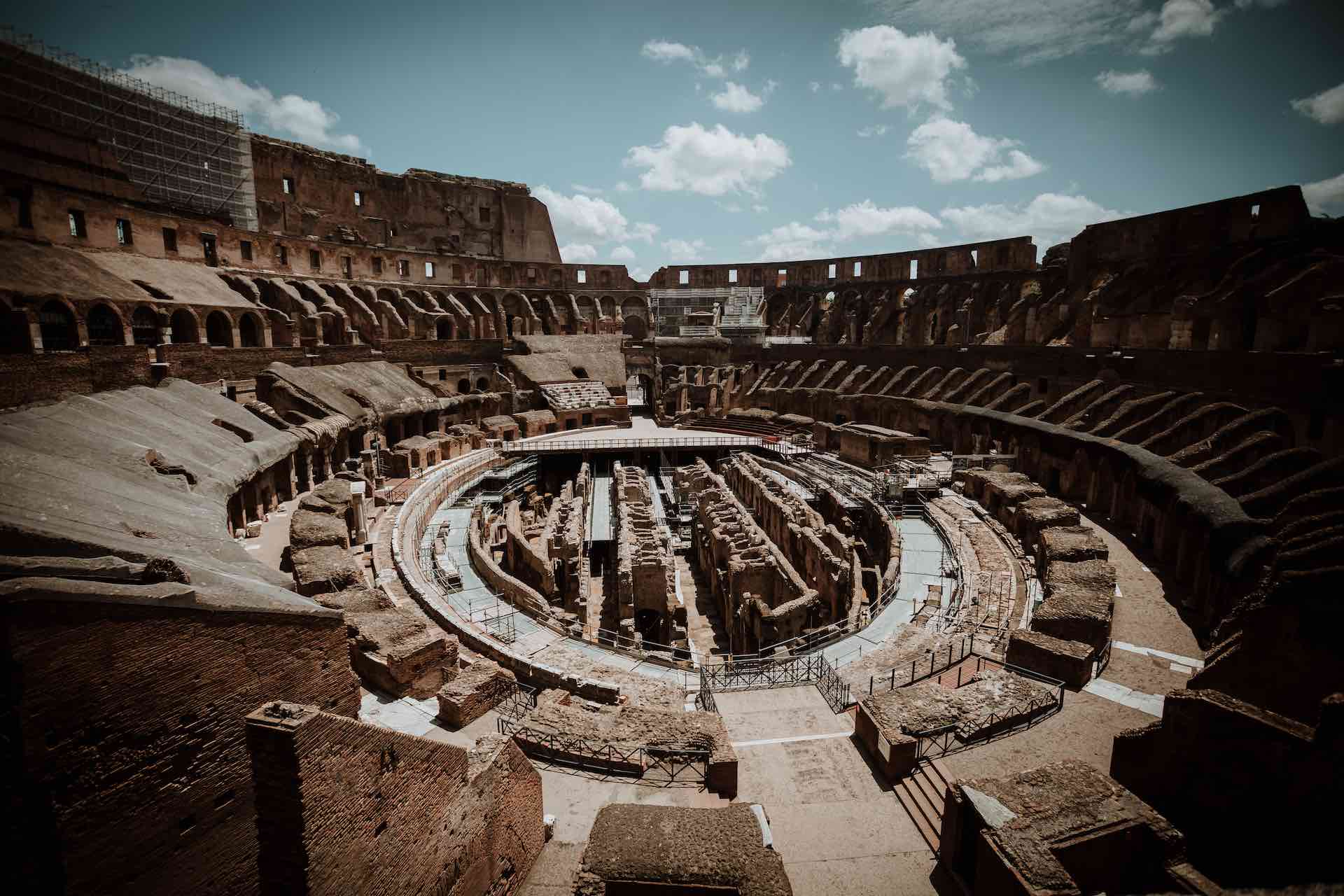Access restricted areas of the world’s most famous amphitheatre through our Colosseum Underground tours!
Around 1,300 years ago, a travelling English monk called Bede looked upon the magnificent ruins of the already ancient Colosseum and wrote, “While the Colosseum stands, Rome shall stand; when the Colosseum falls, Rome shall fall; when Rome falls, the world shall fall.”
Fast-forward to today and, although we’re living through a pandemic and facing unprecedented economic uncertainty, both Rome and the Colosseum are still standing.
And that can only bode well for the rest of us!
Over the centuries the Colosseum has survived fires, earthquakes, lightning strikes and even the more insidious movements of underground currents, and yet it still stands strong, dominating the skyline of ancient Rome. What’s more mind-blowing still is that you can visit not just inside (the arena floor and upper stands) but also descend beneath the ancient amphitheatre to explore the Colosseum Underground.
| → Check out our Private Colosseum Underground tour |
Our Colosseum underground tours will immerse you in the history of this iconic ancient monument. Accompanied by your expert licensed guide, you’ll ascend to its stands and upper levels, where its senatorial spectators awaited scenes of slaughter from below, before following in the footsteps of its gladiators, passing through the tunnels where they prepared to fight for their freedom.
Scroll down for an overview of what our Colosseum Underground tours consist of. Or keep reading for a short and snappy history of Rome’s most iconic monument!
History of the Colosseum
The ancient Romans wouldn’t have known it as the Colosseum, but as the Flavian Amphitheatre, after the emperor Flavius Vespasianus (or Vespasian, to his friends) who funded its construction. It derives its modern name from the 35 metre tall bronze statue of Apollo (known as the ‘Colossus’ on account of its size) that the emperor Nero had set up in the grounds of his Golden Palace.
Nero had been vainglorious in building for himself a luxurious pleasure palace on what, before the Great Fire of Rome in 64 AD, had previously been public land. With his assassination, and Vespasian’s eventual succession, the first of the Flavians decided to give this land back to the people by building on it the most monumental of public, performative structures.
Spoils from the Jewish War funded the construction of the amphitheatre upon the previous site of the stagnum Neronis (Nero’s artificial lake). In fact, if you visit the Arch of Titus at the entrance of the Roman Forum, you can see some of the exact treasures plundered from the Temple of Jerusalem in the summer of 70 AD.
Treasures which were sold or melted down to fund the building of the Colosseum.
Many of the 100,000 Jews the Romans enslaved were made to work on building the Colosseum. The scale of the project, and efficiency with which it was executed, is proven by the fact that the amphitheatre was completed within 10 years, in 80 AD, the year after Vespasian’s death during the reign of his son Titus.
The Colosseum’s inaugural games lasted for 100 days and comprised the full-English-breakfast of Roman spectacles: gladiatorial combats, criminal executions, the slaughter of over 5,000 animals, and re-enactments of both historical and mythological battles. Titus’s younger brother and successor, Domitian, would later add the finishing touches to the upper level and complete the subterranean structure below.
It may have been struck by devastating fires, earthquakes, and even lightning from the third century onwards, but restorations to—and re-buildings of—the Colosseum undertaken by at least seven emperors ensured that it remained relatively pristine until the fifth century. By this point it was being used as a Christian cemetery—the last gladiatorial contest taking place in 404 AD before Theodosius’s pagan ban.
It was never completely abandoned, however, but restored piecemeal by city prefects, popes, and, with the coming of the modern age, party politicians.
What to expect from our Colosseum Underground Tours
Our Colosseum Underground tours include a full tour of the Colosseum’s upper-levels, arena floor and restricted access underground, as well as a tour of the Roman Forum and views of the Palatine and Capitoline hills.
Starting on the Colosseum’s upper levels, you’ll learn all about this structure’s fascinating history and the scenes that went on inside from your knowledgeable, fluent guide. To help bring the Colosseum to life, you’ll also pass through the museum housed within its upper levels, which is full of reconstructions and artefacts recovered from the monument.
Then comes the best part: descending into the dark depths of the Colosseum Underground! This part of the tour is the key to comprehending how the Colosseum functioned as an amphitheatre. Beneath the sands of the arena ran a complex network of cells, passageways, and holding rooms housing both human and bestial participants along with all their equipment and stage props.
Few places on earth transport you so vividly and directly back to antiquity as the Colosseum Underground. Its travertine walls still retain their original white color, unlike those above and inside the monument which for centuries have been exposed to the elements.
Punctuating the winding, labyrinthine corridors of the Colosseum Underground are nooks and crannies only an expert guide can contextualize. Some of its darkened crevices were actually holding cells, cages for wild beasts before they were transported to the arena and pitted against either combatants or the condemned.
Ascending back to the light of day, you’ll then step out onto the Colosseum arena floor before crossing the ancient Via Sacra (Sacred Way) and entering the Roman Forum. Here you’ll enjoy a full tour at the beating political heart of ancient Rome, learning all about its temples, arches, monuments and basilicas. Finish this unforgettable tour with stunning vistas over the Palatine and Capitoline Hills, where your expert guide will nourish you with the knowledge of Rome’s foundation myths and subsequent history!
Walks Inside Rome
Walks Inside Rome is a guided tour and travel agency which has been operating Rome’s historic centre since 1999. We specialize in private and small group tours of no more than 12 participants, giving you a much more personalized experience at your own pace.
For a leisurely visit to the Colosseum, we book your skip-the-line tickets in advance. This guarantees not only speedy access to the Colosseum and its underground, but also entrance to the Roman Forum and the Palatine Hill. This combo ticket is valid for one day in total and is a must see for anyone wanting to visit Rome.
Open 7 days a week, we offer a wide range of engaging and educational tours suitable for first-time visitors to veteran travellers. And we are proud to provide you with a tried-and-trusted team of English-speaking guides to ensure full, authentic immersion in Italian art, history, food and fun.
Contact us for any questions and for any further information about our services. You can fill out the form on our website, send us an email, call us or chat with us on WhatsApp.
We look forward to meeting you soon so we can start exploring Rome together!

